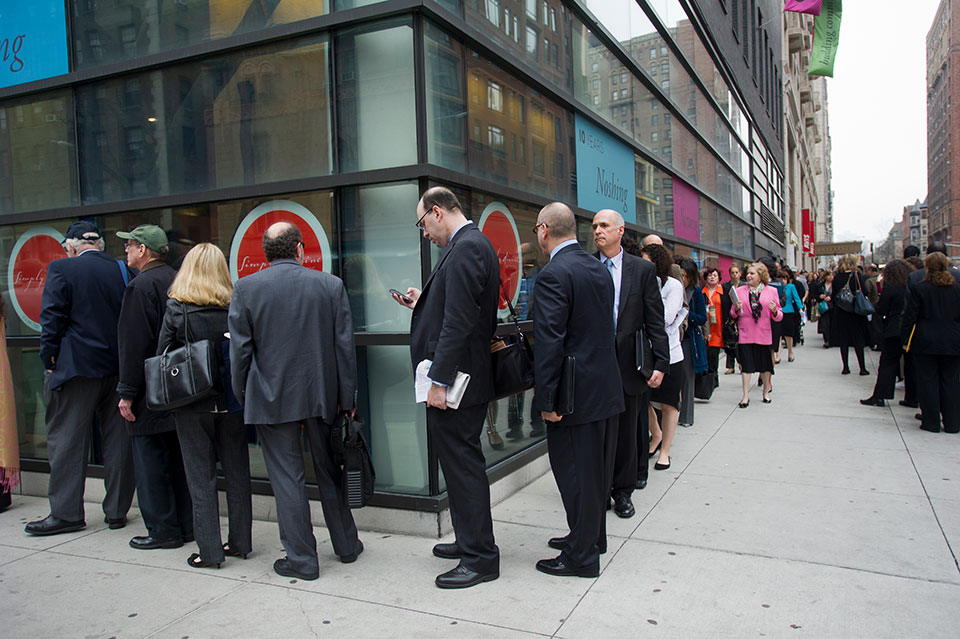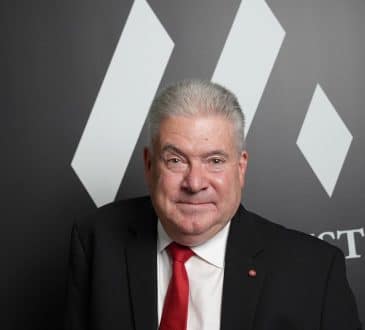Diversifying the Talent Pipeline in a Tight Labor Market

“There’s so many different worlds, so many different suns. And we have just one world, but we live in different ones.”
~ Mark Knopfler, Dire Straits – Brothers in Arms
Mark Twain once wrote, ‘Travel is fatal to prejudice, bigotry, and narrow-mindedness, and many of our people need it sorely on these accounts.’ In better times, we travelled. We would now do well to journey alongside each other’s personal stories. Knowing and hearing each other’s stories opens up empathy and understanding. But more on that later. Let me begin by sharing mine.
I first encountered the lopsided nature of representation in the US healthcare system when I was newly pregnant with my son. As a woman raised in a traditional and conservative Indian society, I was shocked that there were no female OB/GYN doctors available to attend to me. I ended up going with a midwife practice in the same hospital; simply because as a first-time mother, I wanted female healthcare providers with whom I could be more at ease. It occurred to me much later that even among the midwives, I didn’t find one that was not white.
As a new mother, I was shocked at the disparity in breastfeeding statistics; which spurred me on to discover the doughnut effect in urban / suburban cultures. This led me to co-found a breastfeeding education and advocacy network, with a colleague who was also then a new mother.
DEI isn’t disappearing anytime soon
My experience as a community healthcare / breastfeeding advocate coupled with that of health-tech entrepreneur, has taught me that diversifying the talent pipeline in a tight labor market is not just the need of the hour, but critical to our survival as a society. The seemingly incessant noise around ‘Diversity, Equity and Inclusion’ (DEI) isn’t going to go silent anytime soon. Issues around race and ethnicity, gender, sexuality and class, are symptomatic of deeper and more integral threads running through the fabric of contemporary society.
The pandemic has not created, but highlighted the inequalities and inequities in our world, as a glimpse at the statistics below show:
The job sector: 12% of entry level jobs are held by black employees, which is proportionate to the population. However, attrition at that level reduces the pool of black candidates for promotion to managerial positions. Similar dynamics exist around attrition in women’s career pipelines.
Healthcare services: even though racial gaps in Covid-19 vaccination rates are reducing, the healthcare system has been untrustworthy to African Americans. The average wait time for African-American patients needing kidney transplants, is twice that of white patients. The mortality rate for African-American infants, is 2.5 times that of white infants.
Healthcare education: only 5% of medical graduates are African-American. Hispanic and Native American physicians are even rarer. These population groups are more likely to work in under-served communities, than their white counterparts.
Part of the struggle is embedded in the way organizational roles in society are perceived. When we frame corporations as primarily (and only) serving shareholder interests, we do not have the room to care for any other aspect of human and collective well-being.
DEI – the corporate response
The big question corporate America is asking of itself today is: ‘how can we make our organizations more inclusive?’ Realising the need for DEI, many have taken steps to act on it. Devoid of authentic motives, checking the boxes has ended up in virtue signalling, or occupying the moral high ground on social media. Highlight the recruitment of a Chief Diversity Officer – check. Commit significant investments to causes – check. Promote DEI training – check. Ensure the right narrative goes out via the PR agency – check. Yet, most Chief Diversity Officers function without any real power or board representation; which itself is a setup for a breakdown. Checking the right boxes seems to have yielded little or no returns. In-office conversations and interactions have become politically correct, thereby limiting meaningful engagement and lasting results.
A meaningful engagement with DEI, begins with just one word: ‘me.’ The solution is not ‘out there,’ but it’s ‘in here.’ It begins with realising and dealing with our own biases and prejudices. As leaders, we’re called to examine the lenses through which we form our perspectives; because we don’t see the world as it is, but as we are. The hard work of pruning the landscape of our thinking, requires boldness and courage to uncover the shortfalls in our current endeavours. However uncertain the outcomes may be, or however surprising the destinations that we’re led to, may seem.
Our social ecosystem is fragmented, angry and in disarray. The people who walk into our places of work each morning, carry the same angst, but express it in muted undertones, purely out of economic compulsion. Reading this as ‘respect for organisational rules and culture,’ only serves to exacerbate the underlying issues.
Benefits of harnessing DEI
DEI accelerates innovation: In today’s blink-speed competitive environment, innovation is the driver that powers the organizational growth engine. True innovation goes beyond products and services, to encompass the capability of innovatively rethinking the organization’s entire business model.
DEI nurtures resilience: Harnessing resilience enables organizations to get back on their feet and thrive in the turbulence and uncertainty of the new normal.
DEI curates authentic community: Organizations that don’t see themselves as authentic communities, engender broken expectations on the part of their people, while jeopardising the possibility of long-term survival. The uphill journey to building community is poignantly described by Howard Schultz, in his bestseller: ‘Onward: How Starbucks Fought for Its Life Without Losing Its Soul.’
Diversifying the talent pipeline
The first step to engaging authentically with diversifying the talent pipeline, is ‘doing’ things. My experience has shown that ‘being’ authentic about your intentions, makes for a more powerful beginning. Here are some practices that we have endeavoured to inculcate in my start-up, In-Med Prognostics Inc. – the first company in the world to provide neuro-assessment reports and biomarkers that are not baselined on Caucasian data.
- Distinguish between variety and diversity
This is amongst the most important distinctions an organization can make. Variety and diversity are not the same thing. The confusion between the two meanings, is why organisations never harness DEI’s true benefits. Prof. Peter Hershock, brilliantly distinguishes between the two in his book: ‘Valuing Diversity: Buddhist Reflection on Realizing a More Equitable Global Future.’He likens them to the difference between a zoo and a rainforest. The former requires management or external support for survival. While the latter encompasses collaboration and competition; where different systems coexist and evolve towards a state of balance or equilibrium. This cues the need for organizational mindsets or behaviours to shift, while leading and managing diversity; however messy or chaotic it may seem.
- Identify personal and organisational filters
People and organizations both have pre-determined filters or coloured lenses through which the world is examined. Identifying and intentionally transcending their order or hierarchy, leads to enhancing personal and organisational empathy towards other points of view. Looking for dominant filters, unconscious biases, triggers or blind spots, fosters a leadership perspective unencumbered by baggage, that boldly embraces the sea change DEI often brings. - Respect the value of DEI
Going beyond our cultural or organizational scripts to understand what we don’t understand and learning what we must, will unlock the full benefits and potential of DEI. Intentionally using our uniqueness to be different together, will engender authentic and lasting results. Ensuring that everyone gets this and that there is a genuine commitment to shoulder this uphill task, is where proactive leadership is called for. - Authentically engage with DEI
Diversity is not a problem to be fixed, or a phase to be worked through. Engaging with it leads to a higher state of collaboration between people. Intentionally making time to hear each other’s personal stories will create empathy and enriching experiences at the workplace. Leadership development for far too long has focused on results alone, while often side-lining the human dynamics involved in producing them. This may have worked for a while. - Get DEI to work for the common good
It’s not just job requirements or qualifications alone that should determine our choice of candidates. Looking at their inputs and impact on the common good, also needs to be considered. Take for example the pipelines in educational settings and particularly medical schools. America’s doctors-in-training are predominantly white, English-speaking, Christian, and from upper socio-economic classes in suburban areas.
They tend to set up practices in areas they are comfortable with and deal with patients like themselves. This leaves minorities, rural patients, and those who are challenged in the English language, struggling for care. Increasing diverse participation, would make it more accessible to care for under-served populations. The same applies to all outward facing organizations.
C-Suite executives and leaders have a once-in-a-lifetime opportunity to rethink their legacy and wield their immense power in the service of social justice, inclusion, and collective well-being. As we stand on the threshold of a brave new world, we’re challenged to not merely survive, but thrive. We have just one world, and one lifetime to make this happen.
‘It’s not our differences that divide us. It is our inability to recognise, accept and celebrate those differences.’
~ Audrey Lord
Written by Dr. Latha Poonamallee.
Add CEOWORLD magazine to your Google News feed.
Follow CEOWORLD magazine headlines on: Google News, LinkedIn, Twitter, and Facebook.
This report/news/ranking/statistics has been prepared only for general guidance on matters of interest and does not constitute professional advice. You should not act upon the information contained in this publication without obtaining specific professional advice. No representation or warranty (express or implied) is given as to the accuracy or completeness of the information contained in this publication, and, to the extent permitted by law, CEOWORLD magazine does not accept or assume any liability, responsibility or duty of care for any consequences of you or anyone else acting, or refraining to act, in reliance on the information contained in this publication or for any decision based on it.
Copyright 2024 The CEOWORLD magazine. All rights reserved. This material (and any extract from it) must not be copied, redistributed or placed on any website, without CEOWORLD magazine' prior written consent. For media queries, please contact: info@ceoworld.biz
SUBSCRIBE NEWSLETTER









